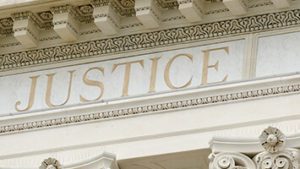 Judge Polansky continued in relevant part: Likewise, in State v. Childs, the Appellate Division found a continuing course of conduct where the defendant raised money for his corporation. The defendant in Childs misled his investors and issued short-term, unsecured, high-interest notes, which were later found to be of no value. See also State v. Tyson (Law Div. 1984) (finding continuous course of conduct where the defendant made false representations to fraudulently obtain and renew welfare benefits, noting that “the defendant’s course of conduct was one scheme extending over a period of time involving the same victim perpetrated by the same deception” in which “the fruits of the defendant’s scheme were received in installments rather than in a lump sum,” and that the “consolidation of the theft offenses provision applies).
Judge Polansky continued in relevant part: Likewise, in State v. Childs, the Appellate Division found a continuing course of conduct where the defendant raised money for his corporation. The defendant in Childs misled his investors and issued short-term, unsecured, high-interest notes, which were later found to be of no value. See also State v. Tyson (Law Div. 1984) (finding continuous course of conduct where the defendant made false representations to fraudulently obtain and renew welfare benefits, noting that “the defendant’s course of conduct was one scheme extending over a period of time involving the same victim perpetrated by the same deception” in which “the fruits of the defendant’s scheme were received in installments rather than in a lump sum,” and that the “consolidation of the theft offenses provision applies).
The Supreme Court recently reiterated the distinction between crimes that can be classified “as either a discrete act or a continuing offense.” State v. Jones, (App. Div. 2016). A discrete act’ is one that occurs at a single point in time. A continuing offense involves conduct spanning an extended period of time and generates harm that continues uninterrupted until the course of conduct ceases. The New Jersey Code of Criminal Justice includes a presumption against continuous offenses, however, that presumption is overcome if the statute defining the offense includes conduct which persists over time. If the scheme that constitutes the offense is one which ‘plays out over the course of many days, weeks, months, or even years,’ then it is a course of conduct.”
The conduct at issue occurred during the period May 2, 2016, to November 15, 2016, a period of 198 days. These 224 crossings of the bridge, without paying the toll, occurred at a rate of more than once per day. This conduct persisted over an extended period of time, essentially on a daily basis. These facts suffice to establish a continuing course of conduct and trigger the provision in N.J.S.A. 2C:20-2(b) which allows the amount of the thefts to be aggregated for the purpose of determining the degree of the crime.
An interesting issue is whether the facts would weigh against aggregation in a case in which authorities recognized a continuing course of thefts was occurring, but waited to bring charges until aggregation would allow for a higher degree of crime. Fundamental fairness would seem to weigh against aggregation for the same reasons that entrapment can be used as a defense when law enforcement encourages a crime to occur which would have otherwise not occurred.
